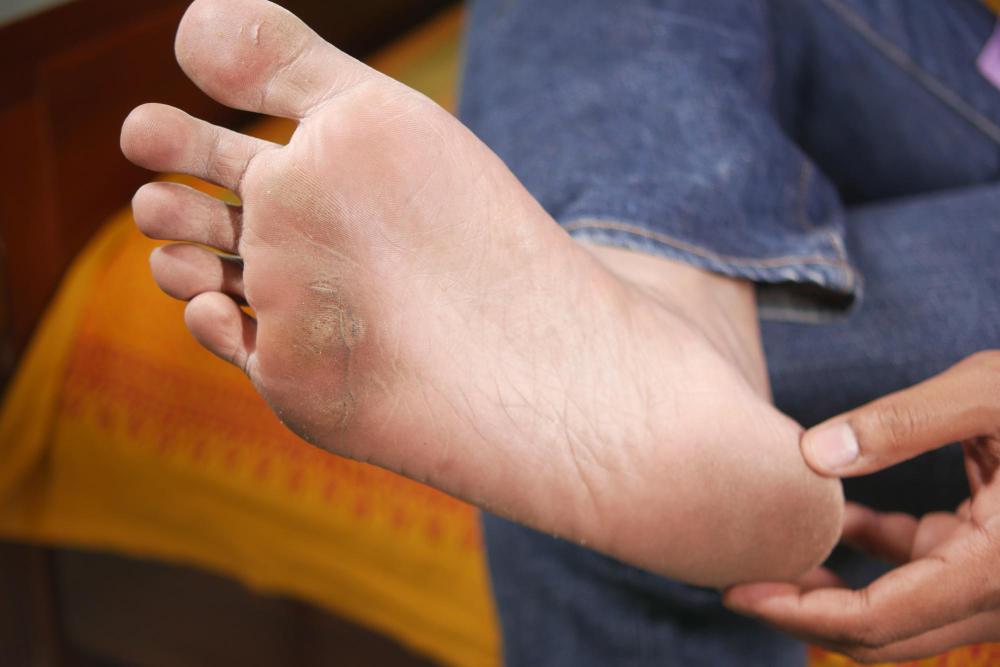How To Tell If You Have Plantar Warts
 Plantar warts, caused by the human papillomavirus (HPV), are a common skin condition that can cause discomfort and concern for individuals. These warts typically appear on the soles of the feet and can be painful, especially when walking or standing.
Plantar warts, caused by the human papillomavirus (HPV), are a common skin condition that can cause discomfort and concern for individuals. These warts typically appear on the soles of the feet and can be painful, especially when walking or standing.
In this brief article brought to you by Mountain Spring Podiatry, we want to introduce readers to plantar warts, guide you on detecting these warts, discuss treatment options, and emphasize the importance of seeking professional care from a licensed podiatrist for accurate diagnosis and proper treatment.
If you would like to schedule an appointment with licensed foot specialists, then call Mountain Spring Podiatry to schedule a consultation or foot care today. Our team is ready to take your call or message.
What are Plantar Warts?
Plantar warts are noncancerous growths that develop on the soles of the feet, particularly in areas such as the heels or balls of the feet that experience pressure or friction. They are caused by HPV, a common virus that infects the skin and can lead to the formation of warts. Plantar warts often have a rough, grainy texture and may appear as small, round lesions with tiny black dots (blood vessels) in the center.
Detecting Plantar Warts
Plantar warts may vary in size but are generally smaller than a pencil eraser. They can be flat or slightly raised with a rough or bumpy surface. Look for clusters of small, black dots (referred to as “wart seeds” or “blackheads”) within the wart, which are actually clotted blood vessels. Some plantar warts may cause changes in the skin’s texture, such as thickening or hardening of the skin over the wart.
Pay attention to areas of the feet that experience pressure or friction, such as the heels, balls of the feet, or areas in contact with footwear. Plantar warts often develop in these high-pressure areas due to the virus entering through small cuts or breaks in the skin.
Plantar warts can cause pain or discomfort, especially when walking or standing. You may feel tenderness or a sharp, pinching sensation when pressure is applied to the wart.
Treatment Options for Plantar Warts
If you suspect you have plantar warts, then keep calm because there are many treatment options available:
- Over-the-Counter (OTC) Treatments: Salicylic acid patches or solutions can be applied directly to the wart to help dissolve and remove the affected tissue.
- Cryotherapy: This treatment involves freezing the wart with liquid nitrogen to destroy the affected tissue but is typically performed by a healthcare professional such as a podiatrist, and it may require multiple sessions for complete removal.
- Electrosurgery: Electrosurgery uses a high-frequency electrical current to remove the wart tissue. This procedure is performed under local anesthesia by a healthcare provider and is effective for larger or stubborn warts.
- Laser Therapy: Laser therapy targets the blood vessels feeding the wart, leading to its destruction. It is a precise and effective treatment option but may require multiple sessions for optimal results.
Professional Care is Key
While some OTC treatments may be effective for minor plantar warts, it is crucial to see a licensed podiatrist for accurate diagnosis and proper treatment. A licensed foot doctor can differentiate between plantar warts and other skin conditions, ensuring an accurate diagnosis and appropriate treatment plan.
If you suspect you have plantar warts or experience persistent pain or discomfort, schedule a consultation with a podiatrist for personalized care and relief. Call Mountain Spring Podiatry to speak with a live member of our team today to get started.
